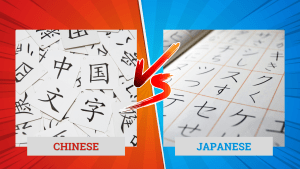Color — a tool of the natural world. A way to evoke emotions and convey meaning. In China, colors are defined by more than their aesthetic qualities. They are infused with symbolism and profound cultural significance that reflect the values and beliefs of its people. Understanding color can unlock insights into everything from art and fashion to marketing and social interactions.
In Chinese tradition, each color represents specific ideals and emotions, tuned finely to the nuances of history and customs. From the celebratory red to the sorrowful white, the interpretations of color can greatly impact personal and communal experiences.
Overview of Color Significance in China
Color plays an important role in the symbolism of Chinese culture. Its importance is deeply woven in the country’s lore and traditions. Each color carries distinct meanings and associations, reflecting different aspects of life, spiritual beliefs, and natural elements. Below, we explore the nuances of each key color within Chinese culture.
Red: Joy and Happiness
Red is revered as the color of joy, happiness, and good fortune. It embodies the bright energy of the fire element and is synonymous with vitality and celebration. Traditionally worn by brides at weddings, red acts as a protective shield against evil.
Yellow: Prosperity and Power
Yellow holds a prestigious place in Chinese culture as a symbol of power, royalty, and prosperity. Historically, it was the imperial color, reserved exclusively for the emperor, embodying authenticity, authority, and harmony. Corresponding to the earth element, yellow signifies stability and abundance. The phrase “Yellow generates Yin and Yang” refers to its central position in color symbolism, with golden yellow celebrated as a color of compassion and an important symbol within Buddhism.
Black: Mystery and Rebellion
In Chinese color symbolism, black is associated with mystery and authority. Linked to the element of water, it signifies hidden wisdom and esoteric knowledge. Despite this, black is traditionally considered an unlucky color, often avoided in celebrations due to its associations with death and mourning. Nevertheless, black conveys stability and authority, commonly used in governmental contexts such as police uniforms to project control.
White: Mourning and Purity
White (白, bái) in Chinese culture symbolizes purity, brightness, and is tied to the metal element of the wuxing. Traditionally, white is worn during mourning rituals and funerals, symbolizing death and making it an integral component of funeral customs. While white is linked to mourning, its interpretation has expanded in modern times to include Western notions of purity, particularly among younger generations.
Blue: Tranquility and Healing
Blue is esteemed in Chinese culture for its connotations of healing, trust, and longevity. As a representation of the spring season, blue signifies new growth and renewal, promoting themes of tranquility and positivity. Its neutral stance makes it versatile, capable of conveying both positive and negative connotations. The color Qing, incorporating shades of blue, green, and black, further emphasizes blue’s role in healing and advancement.
Green: Growth and Harmony
Green, a symbol of renewal, growth, and prosperity, is a highly valued color within Chinese culture. It heralds the arrival of spring, representing new beginnings, vitality, and health. Aligned with the Wood Element, green signifies growth and abundance. In marketing, shades of green resonate with ecological awareness and purity, often used in branding organic products like “green milk” and “green vegetables.”
Purple: Nobility and Wealth
Purple signifies wealth, nobility, and romance in traditional Chinese culture. It represents divinity and immortality, gaining significance in Taoism for symbolizing spiritual awareness. Historically tied to the emperor due to the rarity and cost of purple dye, it has been associated with honor and power. In Chinese opera, a character with a purple face signifies integrity and loyalty, highlighting the color’s connection to moral virtues.
Gold: Luxury and Richness
Gold is regarded as a symbol of wealth, prosperity, and imperial opulence in Chinese culture. Often combined with red during celebrations like the Chinese New Year, gold enhances the festive atmosphere. It represents happiness and good luck, frequently seen in marketing strategies to attract positive energy and perceptions of abundance. The cultural saying “gold has a price, jade is priceless” signifies gold’s valued status while acknowledging jade’s ultimate worth.
Multicolor Symbolism
In Chinese art and culture, multicolor or rainbow symbolism holds a complex position. It represents harmony, inclusiveness, hope, and diversity, embodying values of unity and equality. However, traditional Chinese beliefs once perceived rainbows as ominous signs, particularly signaling the emperor’s impending death. As a result, the use of multiple colors together was generally avoided.
Despite these historical superstitions, modern interpretations have evolved. When used in marketing strategies, multicolor elements can effectively convey messages of unity and diversity, resonating well with contemporary Chinese values. This dual nature of multicolor symbolism highlights the importance of understanding cultural nuances for brands aiming to connect with Chinese consumers.
Cultural Sensitivities in Color Usage
Failing to acknowledge the interplay between color and culture can have detrimental effects. Misusing color, due to a lack of understanding of its cultural significance, can severely damage a brand’s image and alienate consumers. Colors evoke emotions and forge cultural connections — so misusing them can lead to unintended negative consequences.
Colors to Avoid in Marketing
Marketing localization goes beyond mere translation of words. When targeting a Chinese audience, certain colors should be used with care to prevent potential cultural missteps. Here are some guidelines:
- Red: While red is popular and symbolizes luck and prosperity, its overuse in marketing may cause consumers to associate it predominantly with Lunar New Year celebrations rather than the brand’s message.
- Yellow: Historically linked to emperors and now associated with inappropriate content, yellow should be used sparingly and thoughtfully.
- White: This color is synonymous with mourning in Chinese culture; hence, it is inappropriate for festive events or joyous occasions like weddings.
- Black: Often connected with solemnity and misfortune, black should be used cautiously to prevent negative connotations.
- Gold: Symbolizes wealth and luxury but should be applied judiciously, as excessive use can appear cheap or overbearing.
Connection to Chinese Zodiac Animals
Chinese zodiac animals bring an additional layer of meaning to the symbolism of colors. Each of the 12 zodiac animals has associated lucky and unlucky colors, reflective of their unique traits. For example, the Rat, a symbol of adaptability and intelligence, has blue, gold, and green as its lucky colors. These hues represent traits like wealth and liveliness, aligning with the Rat’s aura, whereas yellow and brown are seen as unlucky.
The Ox, known for its diligence and reliability, finds its luck in white, yellow, and gold, tying into symbols of purity and prosperity. Conversely, blue is avoided, seen as unfavorable for the Ox’s steadfast nature. The Tiger, embodying courage, is favored by blue, grey, and orange, whereas brown is less desirable. Each zodiac sign, including the Rabbit, Dragon, and others, has distinct colors that influence choices in personal attire, home decor, and various life aspects, reflecting their intrinsic qualities and meanings.
Colors in Festivals and Celebrations
In Chinese celebrations, color usage is not only an aesthetic choice but a symbolic tradition. Red is the most celebrated color and a staple in festival decor, especially during Chinese New Year. It embodies prosperity, happiness, and success, with red lanterns, banners, and clothing being ubiquitous. This color’s prevalence at festivals reaches its peak in the form of red envelopes, often exchanged during the Chinese New Year, filled with money to wish prosperity and good luck.
In contrast, white and black are generally avoided during festive occasions. White’s association with mourning and death makes it unsuitable for joyous events, while black, despite its authority symbolism, is understood as bringing bad luck.
To encapsulate Chinese culture’s beliefs about colors, the following table summarizes the symbolic significance:
| Color | Symbolism | Lucky or Unlucky |
| Red | Happiness, Success, Good Fortune | Lucky |
| Yellow | Royalty, Honor, Warmth | Lucky |
| Green | Health, Vitality, Harmony | Lucky |
| Black | Authority, Knowledge | Unlucky |
| White | Mourning, Death | Unlucky |
| Purple | Love, Strength, Spiritual Awareness | Neutral |
Understanding these symbolic color meanings is vital for effectively engaging Chinese consumers.





